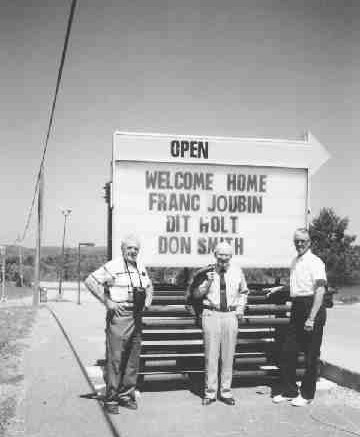Early one morning in May 1953, on a train south to Algoma from Elliot Lake, Ont., I was abruptly awakened in my lower berth by none other than Harry Buckles, the well-known mining engineer who would play a major role in the Blind River and Elliot Lake camps. Buckles threw back the curtains, spread out a map and said drilling had already started at a property known as Peach. This would later become the Pronto uranium mine, and it was situated along the southern belt of the famous “Z” sedimentary contact, near Highway 17.
The map had been extensively marked by prospector Franc Joubin (1911-1997).
“Franc believes that somewhere along the ‘Big Z’ should be the location of uranium deposits similar to the Peach,” Buckles stressed.
Shortly thereafter, an enthusiastic Buckles introduced me to Don Smith, a full-time geologist with Joubin’s Toronto-based Technical Mine Consultants. Smith would be my boss in charge of the initial drilling of the Peach discovery, an important assignment.
Smith is a common surname, but Don Smith was anything but. He was, and is, unique. Born and raised on a farm in New Brunswick, where he and future wife Muriel were high-school sweethearts, Smith enrolled in pre-medical school at Acadia University before joining the Royal Canadian Air Force in Moncton, N.B.
He trained hard and earned his wings as part of the Maritime coastal patrol. Eventually, he travelled to England where he became a flying officer in Her Majesty’s Bomber Command. As part of the Allied forces in the Second World War, he commanded a Wellington bomber with a small crew but soon graduated to a Halifax bomber with a crew of six under his command.
He flew about 10 missions, but his last was certainly his most memorable and frightening. En route to a target over Germany, the bomber was hit with some anti-aircraft fire and quickly descended into a steep dive. In an attempt to save himself and the crew, Smith wrapped himself around the yoke and tried to yank the plane out of its descent — a feat made even more difficult by the fact that the weight of the navigator, who was killed by the gunfire, was slumped against him.
Without much hope for survival, Smith grabbed the intercom and urged his crew to jump.
The next thing he knew, he was in mid-air plummeting toward the ground and struggling with his ripcord. He right arm was broken, but he managed to deploy a secondary parachute with his left hand. To this day, he doesn’t know exactly what happened, but one of his crew later told him the plane had exploded and split open in mid-descent.
Badly wounded, Smith was taken prisoner by the German forces and spent six months in a war camp. After the war, he spent time in a London hospital, only to return to Canada and enroll once again at Acadia, but not in med-school. The loss of sensitivity in Smith’s right hand, which stemmed from the plane crash, forced him to switch to geology. Smith graduated with his degree a few years later, married Muriel and headed west to Queens University in Kingston, Ont., for one more year of post-graduate work.
Smith worked in Cobalt, Ont., before moving to Algoma with his family to oversee Joubin’s diamond drilling program at Peach. At the same time, he became an important member of the Technical Mine Consultants and Preston East Dome team, which went on to discover and develop several uranium deposits in the Elliot Lake area.
Smith was awarded the Sons of Martha Award for his tireless contributions to the Professional Engineers of Ontario. He currently resides in Scarborough, Ont.
And so, if you’re ever passing through Elliot Lake and you drive by Smith Place, off Hard Road, you’ll know that the street was named after a man who was both a war hero and a geological pioneer.
Next week: Arthur Stollery
The author, a retired mining engineer, resides in Barrie, Ont.


Be the first to comment on "Don Smith: uranium pioneer"